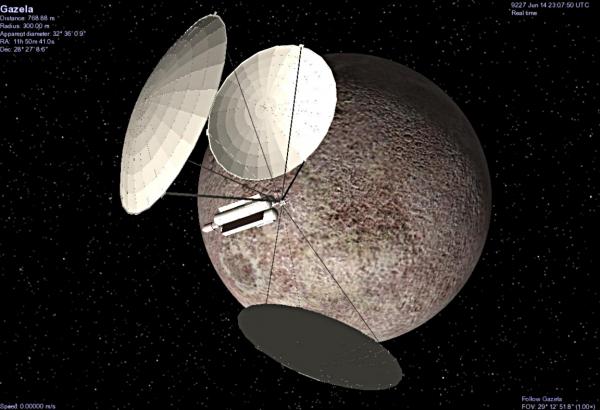BY LETTER
Thermal Rockets
Technology > Application > Transportation > Interplanetary Transport
Technology > Application > Transportation > Propulsion Technology
Technology > Application > Transportation > Propulsion Technology
Fuelless rockets driven by an external heat source | |
 Image from Steve Bowers | |
| A Solar Moth - a thermal rocket ship powered by collected sunlight | |
These are possibly the simplest space drives of all: take a mass of any volatile (water and ammonia are both popular), seal it in a balloon, and heat it by putting it inside the local snowline. A collection of mirrors, as used by the Solar Moth design, makes this passive heating more efficient. Add a nozzle, and instant rocket.
Thermal rockets can also be powered by beamed energy, such as a laser. In the cold, dark outer regions of a planetary system there is not enough starlight to power a thermal rocket directly, but around a gas giant there is often considerable power to be extracted from the planet's magnetic field. In such regions a laser, powered by electrodynamically generated energy, can heat up the propellant enough to produce thrust.
Some designs use reservoirs of frozen propellant, and the laser simply evaporates the ice at one end of the reservoir. This system can even be used for launches wherever the thrust produced by such a system exceeds the weight in the local gravity field.
Thermal rockets have Isps usually no more than 200, a thrust to weight ratio of 1000 to 1 or better, and a total delta-v of no more than 5 km/sec or so.
Related Articles
Appears in Topics
Development Notes
Text by Mauk Mcamuk, Chris Shaeffer and Steve Bowers
Initially published on 03 December 2008.
Initially published on 03 December 2008.






